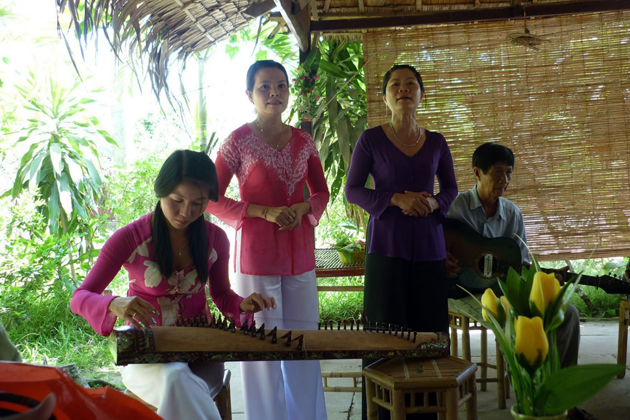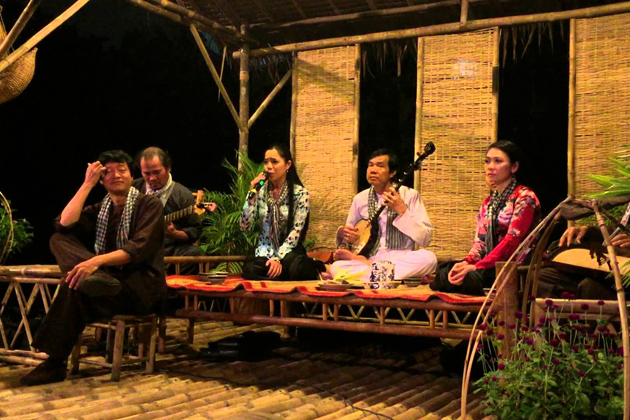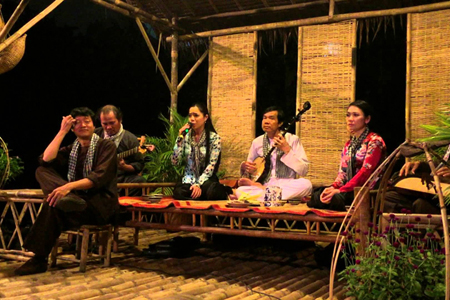Being a musical art of Vietnam, the art of Don Ca Tai Tu music and the song was developed in the South region and devived from both scholarly and folk origins. Appeared since the late 19th century, Don Ca Tai Tu aims to reflect the lifestyle of people who live and work on the land and rivers of Mekong Delta and to express their characteristics, feelings, and emotions.
Gone through many periods, Don Ca Tai Tu has been impacted by several art forms in the Central and the South of Vietnam like ceremonial music (nhac le), classical theatre, and folk song (hat boi). A repertoire is based on 20 principal songs (bai to) and 72 classical songs (bai nhac co) including skeletal melodies that are the primary for improvisation and variation.

Instrumentalists use moon-shaped lute (kim), two-stringed fiddle (co) and bamboo flute (sao) for a Don Ca Tai Tu performance. In addition, they can also use guitar and violin to play special ornamentation characteristic of Don Ca Tai Tu.
In performance, it is necessary for the participation of master instrumentalists (thay don) who are very polished at playing and teaching various kind of Vietnam instruments and knowledgeable at all classical repertoires; master lyricists (thay tuong) who are well-informed about composing new song texts; master singers (thay ca) who understand thoroughly the classical repertoire and who are able to perform and teach the distinctive Don Ca Tai Tu vocal techniques. Besides, a performance also needs regular instrumentalists (danh cam) and singers (danh ca). Notably, the audience can take part in practicing, giving comments, and creating new song texts.

In order to exist until now, Don Ca Tai Tu has been transmitted by 2 methods which are oral transmissions such as truyen ngon, truyen khau and the combination of the first method with a syllabus in many schools of art and culture. A period of at least 3 years is the time for instrumentalists to learn basic instrumental techniques such as tremolo, glissando, trills, and vibrato, etc. in individual or with other people in duets, trios, quarters, quintets, or sextets. As for vocalists, they learn to perform traditional songs solo or in a duet.
Don Ca Tai Tu is considered as an important spiritual cultural part of festival, death anniversary rituals, and social events like weddings or birthdays, etc.
Nowadays, there are 2,500 Don Ca Tai Tu clubs, groups, and families primarily located in 21 provinces of the South of Vietnam which are An Giang, Ba Ria - Vung Tau, Bac Lieu, Ben Tre, Binh Dương, Binh Phuoc, Binh Thuan, Ca Mau, Can Tho, Dong Nai, Dong Thap, Hau Giang, Ho Chi Minh City, Kien Giang, Long An, Ninh Thuan, Soc Trang, Tay Ninh, Tien Giang, Tra Vinh, and Vinh Long.
On 5 December 2013, Don Ca Tai Tu was recognized officially as an Intangible Cultural Heritage of Humanity by UNESCO.



